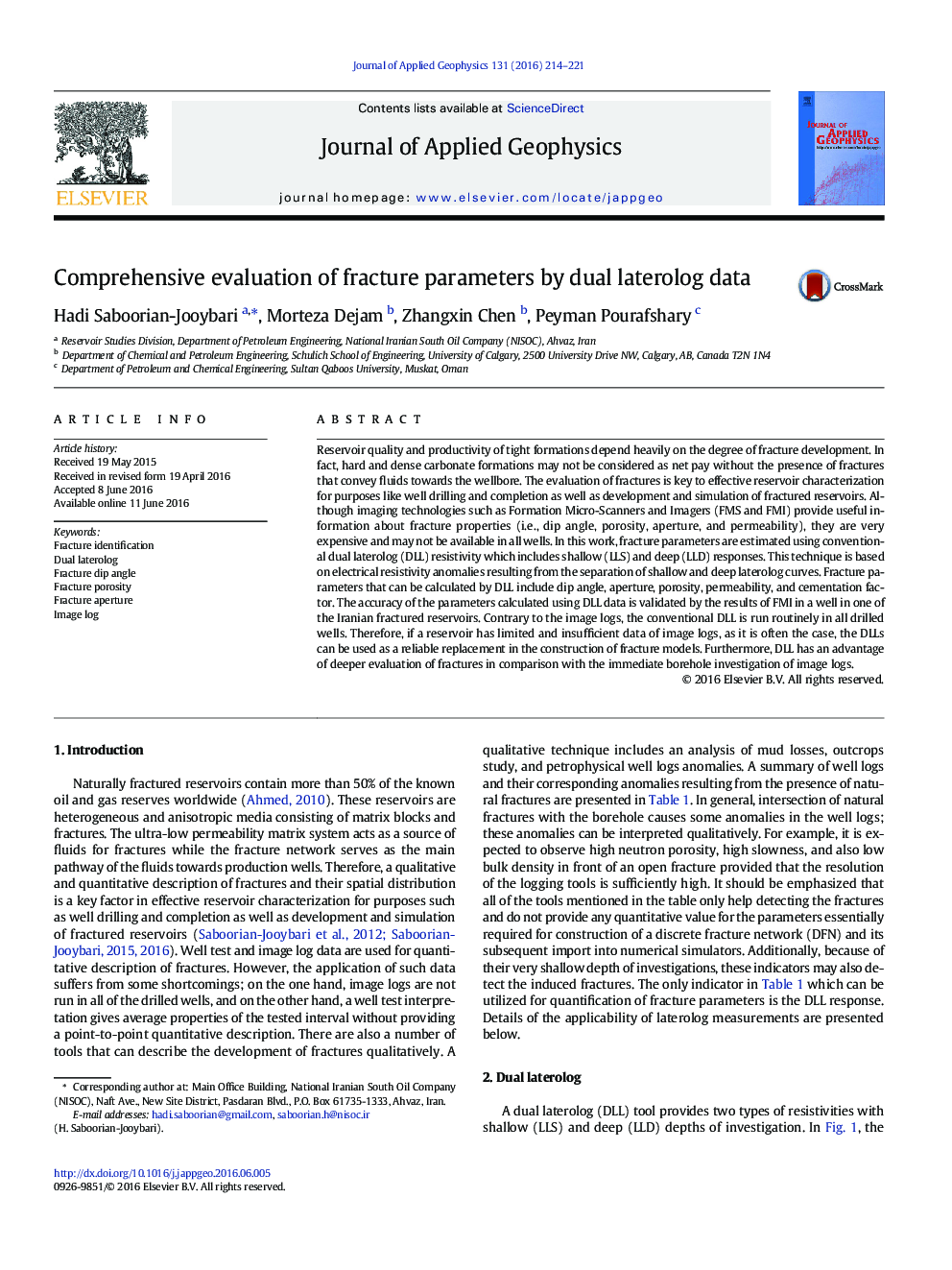| کد مقاله | کد نشریه | سال انتشار | مقاله انگلیسی | نسخه تمام متن |
|---|---|---|---|---|
| 4739742 | 1641120 | 2016 | 8 صفحه PDF | دانلود رایگان |
• Calculation of fracture dip angle, aperture, porosity, and permeability using DLL data
• Validating accuracy of the calculated parameters by the results of FMI
• Evaluation of the accuracy of the DLL tool in prediction of fractures' aperture
• Comparing fracture model constructed on the basis of DLL data to that with FMI
Reservoir quality and productivity of tight formations depend heavily on the degree of fracture development. In fact, hard and dense carbonate formations may not be considered as net pay without the presence of fractures that convey fluids towards the wellbore. The evaluation of fractures is key to effective reservoir characterization for purposes like well drilling and completion as well as development and simulation of fractured reservoirs. Although imaging technologies such as Formation Micro-Scanners and Imagers (FMS and FMI) provide useful information about fracture properties (i.e., dip angle, porosity, aperture, and permeability), they are very expensive and may not be available in all wells. In this work, fracture parameters are estimated using conventional dual laterolog (DLL) resistivity which includes shallow (LLS) and deep (LLD) responses. This technique is based on electrical resistivity anomalies resulting from the separation of shallow and deep laterolog curves. Fracture parameters that can be calculated by DLL include dip angle, aperture, porosity, permeability, and cementation factor. The accuracy of the parameters calculated using DLL data is validated by the results of FMI in a well in one of the Iranian fractured reservoirs. Contrary to the image logs, the conventional DLL is run routinely in all drilled wells. Therefore, if a reservoir has limited and insufficient data of image logs, as it is often the case, the DLLs can be used as a reliable replacement in the construction of fracture models. Furthermore, DLL has an advantage of deeper evaluation of fractures in comparison with the immediate borehole investigation of image logs.
Journal: Journal of Applied Geophysics - Volume 131, August 2016, Pages 214–221
